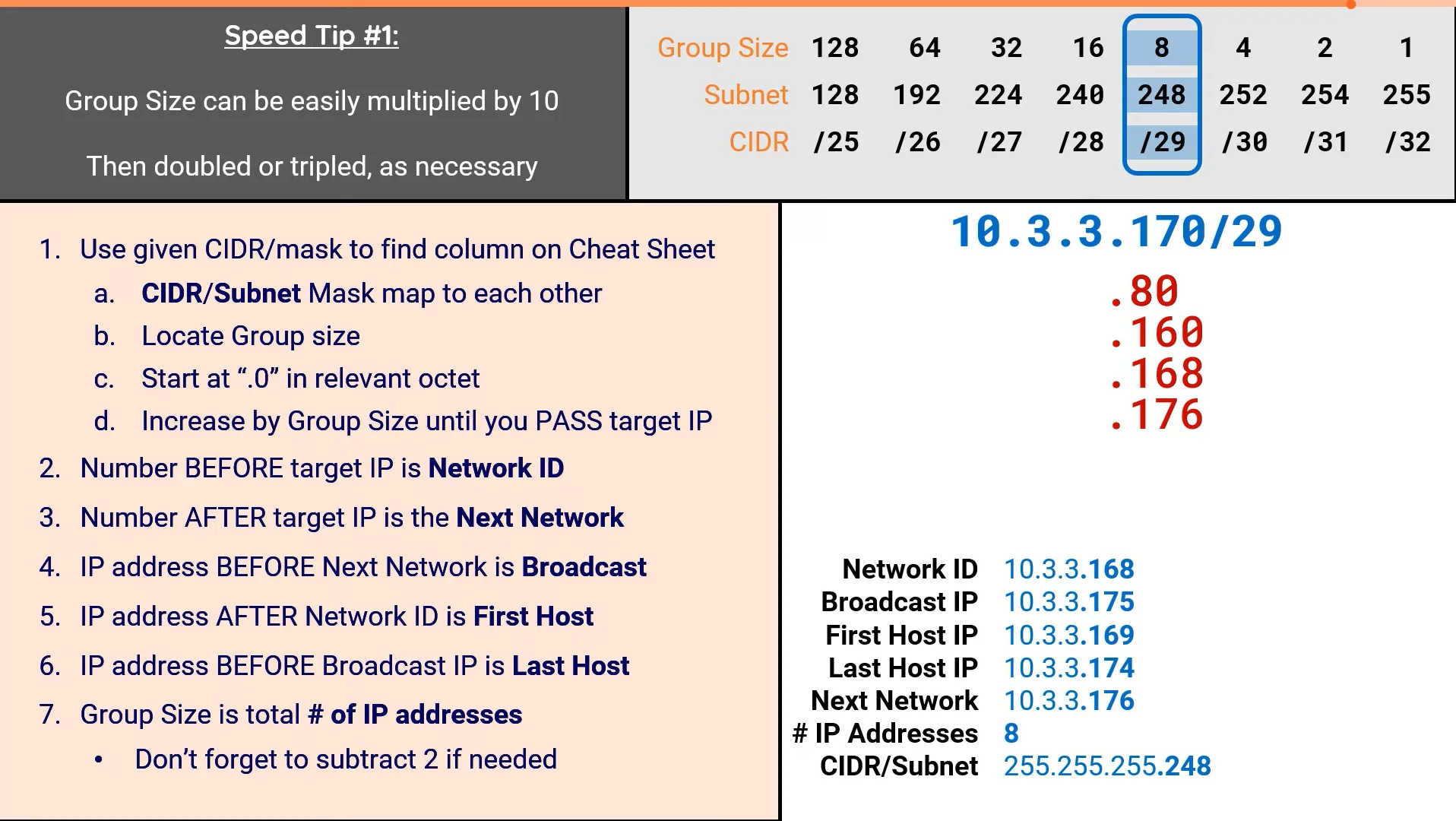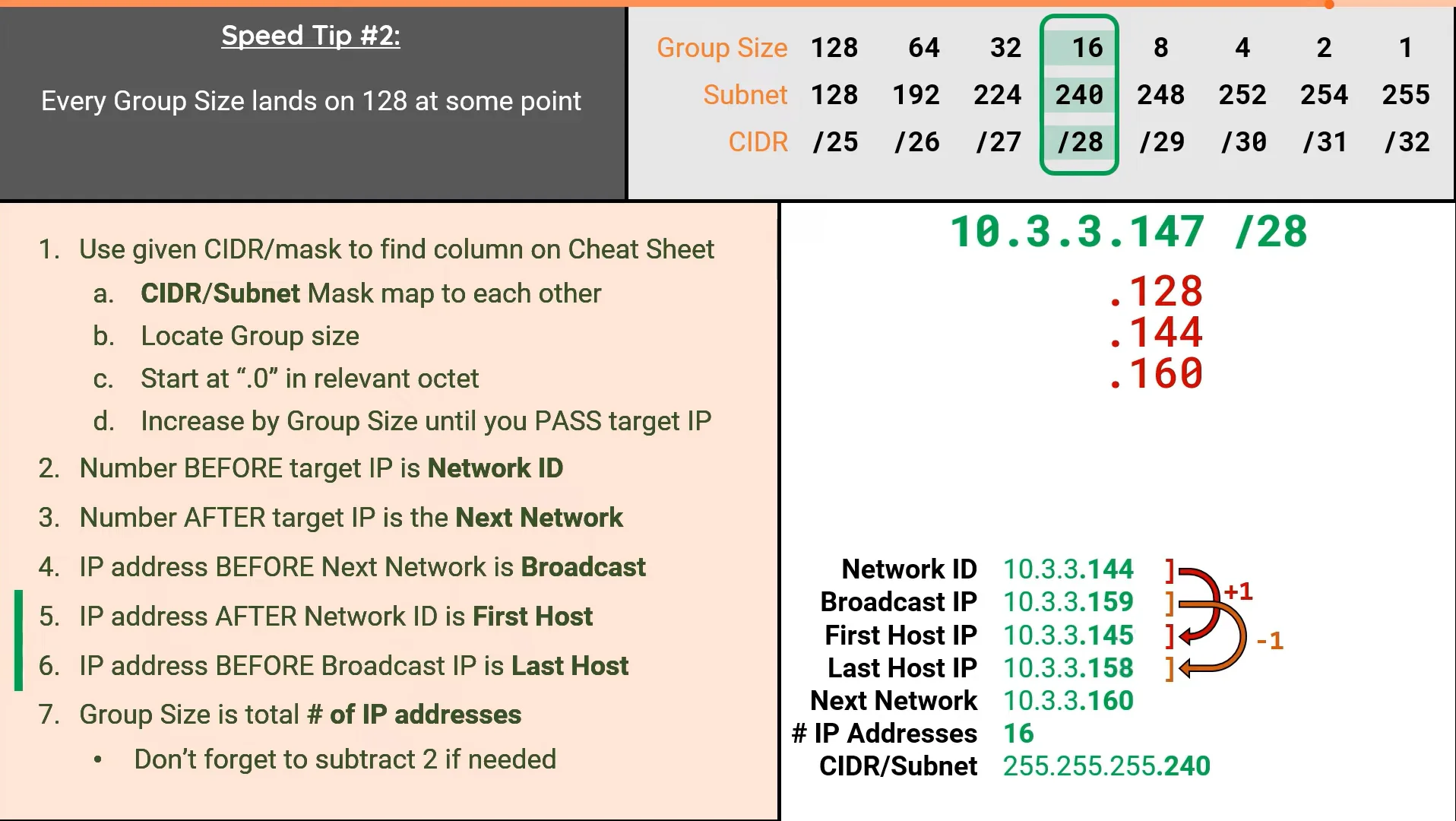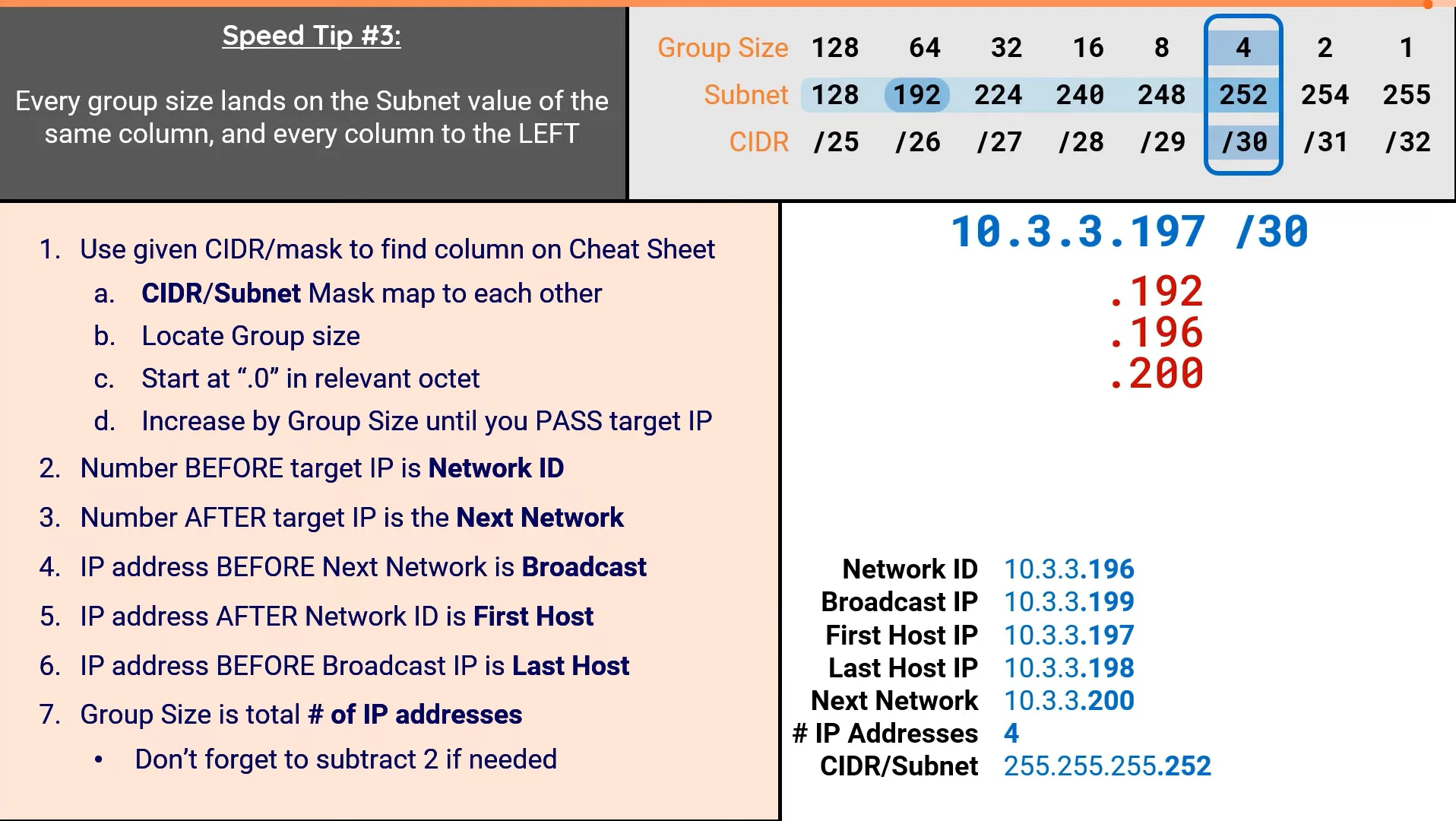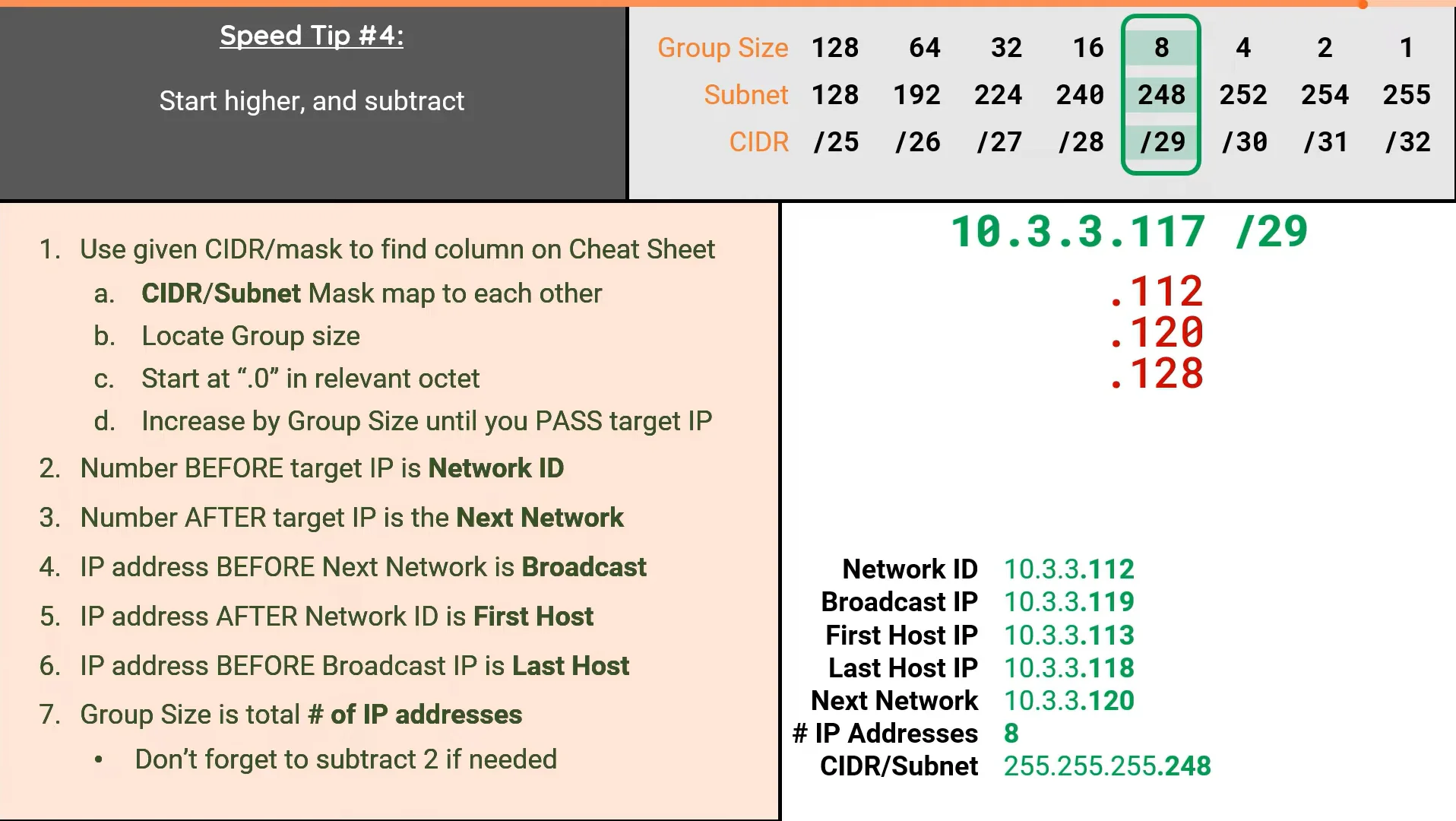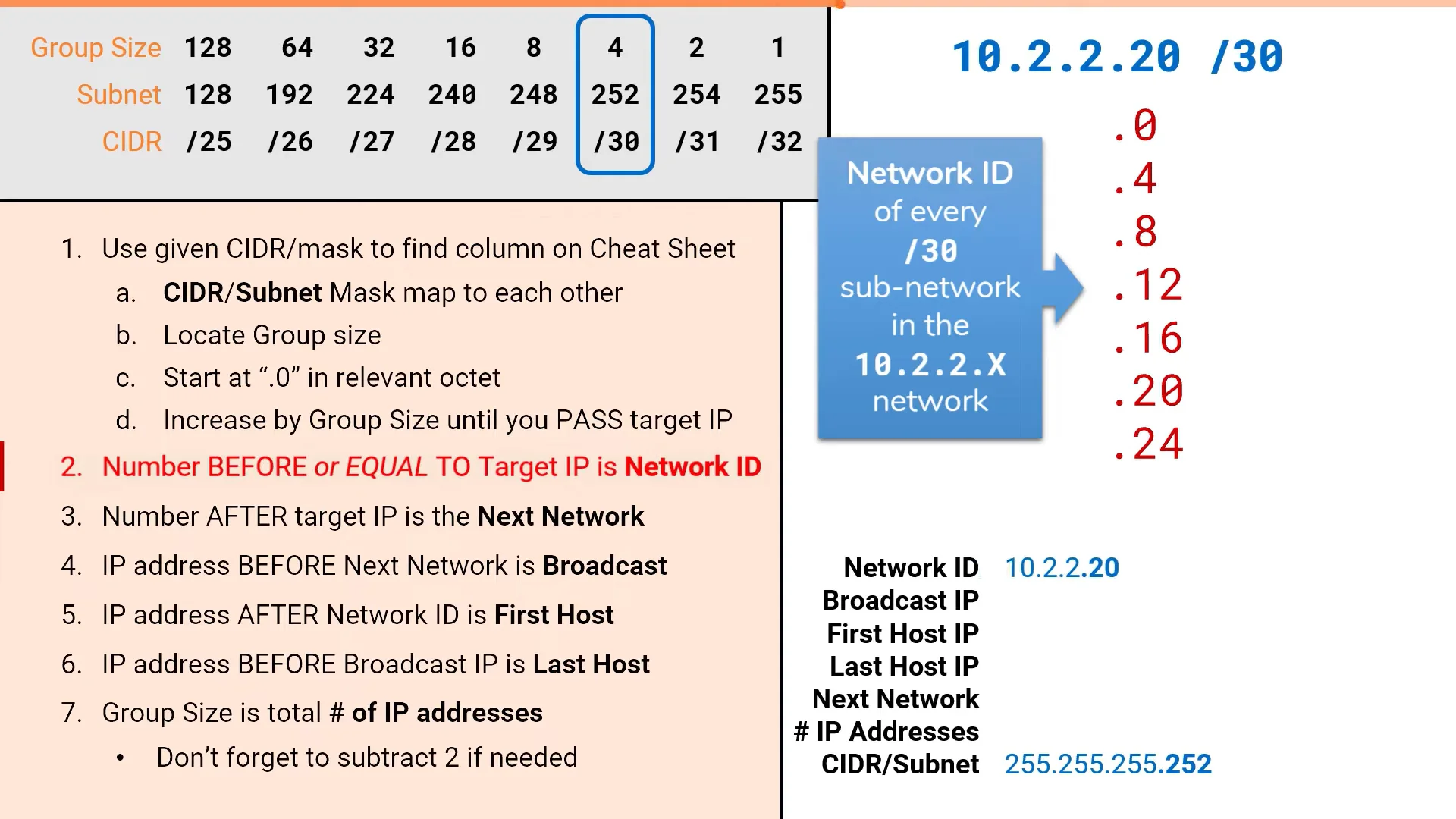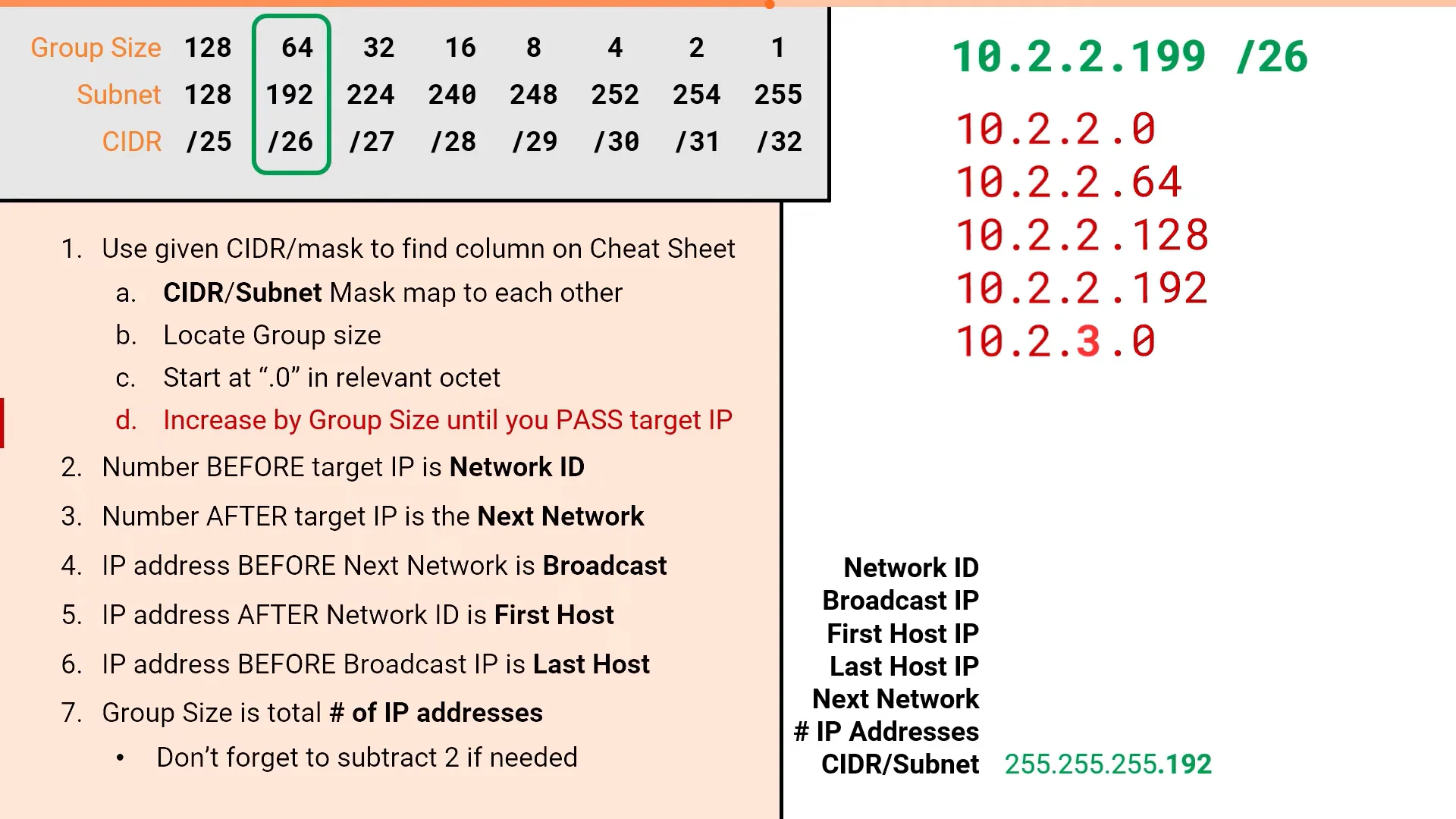Jeremy’s IT Lab lecture video:
Day 14 - Subnetting (2)
Practical Networking’s Subnetting Mastery playlist
Cheat Sheet - Group Size Calculation
Important Group Size Calculation
Important Group Size Calculation
Practical Networking’s Subnetting Mastery playlist
How to Calculate group size for the 3rd Octet and below (/1 - /24) in the Cheat Sheet
The Solution
From the cheat sheet, we know that every CIDR notation has its own group size which indicates how many hosts it can hold, but, in the cheat sheet table, the group size numbers only indicate the amount of hosts that can be held within /25 till /32. It doesn’t mention the group sizes for /1 till /24.
However, it turns out you can just continue counting the group size by DOUBLING the previous CIDR notation’s group size.
- So, from our current cheat sheet, we know that /25 has group size 128.
- To get /24’s group size, you double the previous CIDR’s group size, and you get 256.
- To get /23’s group size you double the previous CIDR’s group size, and you get 512.
- To get /22’s group size you double the previous CIDR’s group size, and you get 1024.
- To get /21’s group size you double the previous CIDR’s group size, and you get 2048.
- You can continue doing this process until you get to the CIDR notation you want.
And that’s how you get the group size values for all the CIDR notation in the list.
Link to original
Speed Tips
PracNet Subnet guide - Speed tips
PracNet Subnet Guide - Speed Tips
Practical Networking’s Subnetting Mastery playlist
PracNet Subnetting - Speed Tips
- Group size can be easily multiplied by 10, then doubled or tripled, as necessary.
- Every group size lands on 128 at some point.
- Every group size lands on the Subnet value of the same column, and every column to the LEFT (in the cheat sheet).
- Start with a higher number, and subtract downwards till you reach the subnet you need.
Tip (1)
Tip (1)
Group size can be easily multiplied by 10, then doubled or tripled, as necessary.Tip (2)
Tip (2)
Every group size lands on 128 at some point.Tip (3)
Tip (3)
Every group size lands on the Subnet value of the same column, and every column to the LEFT (in the cheat sheet).Tip (4)
Link to original
Tip (4)
Start with a higher number, and subtract downwards till you reach the subnet you need.
Watch Out
PracNet Subnet guide - Things to watch out for
PracNet Subnet Guide - Things to Watch out for
Practical Networking’s Subnetting Mastery playlist
PracNet Subnetting - Watch Out
- Make sure to PASS the target IP address when incrementing.
- Sometimes when we’re incrementing to pass the target IP address, we might increment until we reach .256.
- However, .256 does not exist, that’s why we will enter the next subnet/octet when this happens.
Example in 64 bit increments:
- (10.0.1.192 ⇒ 10.0.1.256 || WRONG ❌)
- (10.0.1.192 ⇒ 10.0.2.0 || RIGHT ✔️)
Tip (1)
Make sure to PASS the target IP address.Link to original
Tip (2)
When we’re incrementing to pass the target IP address, we can’t go into .256 for example, instead, you will enter the next subnet/octet.
